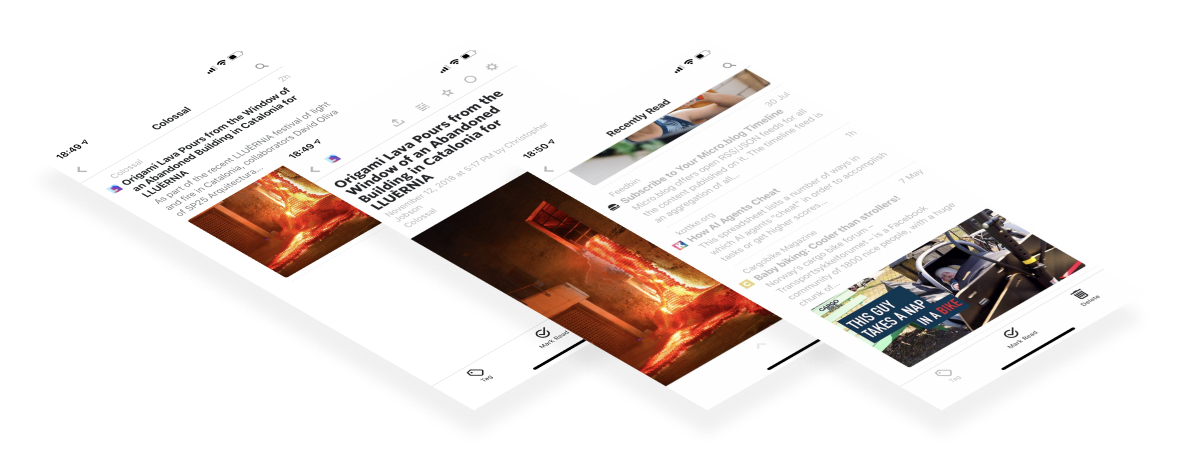RSS wasn’t dead
I have sweared to a RSS-reader for following blogs and interesting webpages for over a decade now. I love that I once a week can sit down with a cup of coffee and read all the blogs/websites I follow without switching context and webpages all the time.
What is a RSS reader?
From whatisrss.com
RSS solves a problem for people who regularly use the web. It allows you to easily stay informed by retrieving the latest content from the sites you are interested in. You save time by not needing to visit each site individually. You ensure your privacy, by not needing to join each site’s email newsletter.
My RSS-reader history
I got introduced to RSS-readers with Google Reader, and became quickly addicted. When Google shut it down in 2013 I needed to find an alternative. My choice fell on Shaun Inmans Fever. It was a self hosted solution, which meant a bit of work, but on the other hand I owned my own data and it would still work the day support for it stopped.

I loved how it worked and that I had control over all the files – especially the CSS. I even made my own theme people could use. Sadly Shaun Inman stopped supporting fever two years ago. I’ve been using it until now, but it’s time to admit that it’s just running on fumes now. We had a good run.
Therefore one of my weekend activities became finding a new RSS-reader. On my iPad I’ve been using Reeder 3 for reading the content on Fever. I therefore started with the list of RSS-readers Reeder supports. I checked out more or less everyone of the competitors, but there was one clear winner:
Feedbin is a small company with two persons running on a subscription-based model (5$ month). Good news: a sustainable business-model unlike Google Reader and Fever.
Subscribe to emails
The one killer-feature which made the choice to switch to Feedbin easy was the ability to subscribe to newsletters and have them appear as a feed together with your other subscriptions. The last years it has, understandably, become very popular to make newsletters. There is a lot of great newsletters out there that just excist as newsletters and the only way to access them is by getting mail. I personally hate to get newsletters mixed with other mail and things I actually have to respond to. Mentally it’s better for me to read those email-subscriptions while I read the other RSS-feeds thereby seperating work from reading / getting updated. Therefore this feature in Feedbin really struck home, and I’ve been transferring each newsletter as I get mail in my inbox.

Clean up old feeds
Luckily it is usually easy to switch RSS-reader since there is an open standard for consuming and exporting them, OPML, which almost everyone use. I used that when switching from Google reader to Fever, as well as now from Fever to Feedbin. That meant there were lot of feeds that needed to be cleaned up - some feeds hadn’t been updated since 2012. Luckily Feedbin has a simple solution for seing how frequently blogs are updated and when they last were updated which made the cleaning job rather easy.
A lot of great features
Feedbin got itself a new fan this weekend. I recommend trying it out. It also has a bunch of other great features like:
- Nice typography. Hello Hoefler & co!
- An impressive webapp which makes me forget Reeder 3 exists. (Seriously: the only thing to complain about is if your are switching to another app and back and it forgets it’s state)
- It can fetch full text from article for feeds that only offer partial content
- They are private by default
- They even have a solution for reading Twitter (which I haven’t checked out yet)
